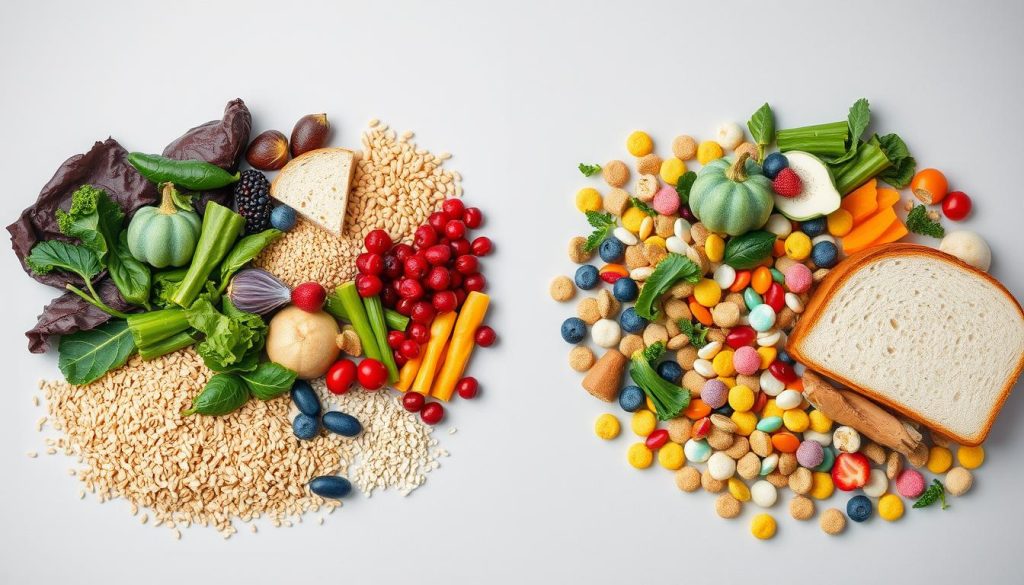GI (GI Certified) Test: What You Need to Know
Understanding nutrition and keeping your metabolism healthy can be tough. But, the GI (Glycemic Index) certified test helps a lot. It shows how carbs affect your blood sugar, which is key for people with diabetes or those trying to stay healthy.
Knowing the GI of foods helps you make better food choices. It supports healthy eating and the benefits of eating low-glycemic foods. By learning about the GI test, you can make smarter food choices. This can help control your blood sugar, improve insulin sensitivity, and boost your metabolic health.

Key Takeaways
- The GI (Glycemic Index) certified test is a scientific method used to measure the impact of carbohydrates on blood sugar levels.
- Understanding the GI of foods is crucial for individuals with diabetes, prediabetes, or those seeking to manage their metabolic health.
- A low-glycemic diet, informed by GI testing, can support healthy blood sugar control and insulin sensitivity.
- GI certified testing can guide dietary choices and promote overall metabolic well-being.
- Certified nutrition professionals can provide expertise in interpreting GI test results and developing personalized nutritional strategies.
Understanding the Glycemic Index and Its Importance
The glycemic index (GI) is a key tool in nutrition. It shows how carbs affect our blood sugar. It helps us manage our low-glycemic diet, weight management, and carbohydrate management.
The Role of Glycemic Index in Nutrition Labeling
The GI is important in nutrition labels. It helps us choose foods wisely. By knowing the GI, we can pick low-GI and high-GI foods for our health.
Identifying Low-GI and High-GI Foods
It’s important to know the GI of foods. Foods with a GI of 55 or less are low-GI. Foods with a GI of 70 or more are high-GI. Eating low-GI foods helps control blood sugar and aids in weight management.
| Food Category | Glycemic Index Range | Examples |
|---|---|---|
| Low-GI Foods | 0 to 55 | Lentils, chickpeas, most fruits and vegetables, oats, barley |
| Moderate-GI Foods | 56 to 69 | Whole wheat bread, brown rice, potatoes |
| High-GI Foods | 70 and above | White bread, pasta, white rice, sugary snacks and beverages |
Understanding the glycemic index helps us make better food choices. This supports our health and well-being.

GI (GI Certified) Test: Assessing the Glycemic Impact of Foods
Checking how foods affect blood sugar is key for healthy meal planning, keeping blood sugar levels in check, and helping with weight control. The GI (GI Certified) test measures this impact. It’s done by experts who use a set method to find out the glycemic index (GI) of different foods.
This test feeds a group of people a set amount of food, then checks their blood sugar often. They compare it to eating pure glucose or white bread. This way, they get a true GI value, showing how fast a food raises blood sugar.
Knowing the GI of foods is important for nutrition education and making low-glycemic diet plans. Eating low-GI foods helps manage blood sugar levels and reach weight control goals. The GI Certified label makes it easy to pick low-GI foods, helping with food labeling.
The GI (GI Certified) test gives important insights into food’s metabolic effects. It helps people make better food choices, supporting their health and well-being.

Conclusion: Embracing GI Testing for Better Health
The GI (GI Certified) test is a key tool for better metabolic health and diabetes management. It helps us understand the glycemic index and its role in nutrition labeling. This knowledge lets us choose low-GI foods for better blood sugar control and weight management.
GI testing gives us insights into a low-glycemic diet. This diet supports healthy eating and overall well-being, especially for those with diabetes. By using GI testing, we can better understand how carbs affect our bodies. This helps us control our blood sugar levels more effectively.
Adopting GI testing is a big step towards better health outcomes. It helps us understand nutrition labeling and find low-GI foods that meet our needs. This way, we can improve our metabolic health and overall well-being.